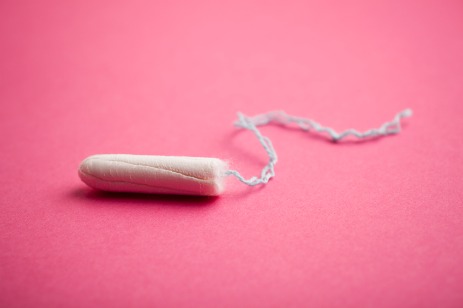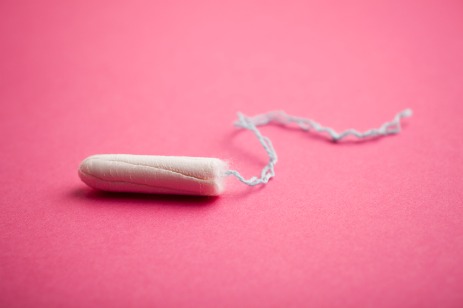Send your question to Umbra!
Q. Dear Umbra,
I try to be more sustainable by using tampons without applicators. Unfortunately, the OB brand has been disappearing off store shelves. OB says they’ll be restocking within a few weeks, but I can’t wait. Forgive me, but they don’t call it “that time of the month” for nothing. Apparently, I can buy a box on eBay for like $50. But I’m sure you know of more sustainable solutions. So what are they? Thanks!
Liza
New York, NY
 OBehave: Instead of panicking, use the Tampocalypse as an excuse to green your period. A. Dearest Liza,
OBehave: Instead of panicking, use the Tampocalypse as an excuse to green your period. A. Dearest Liza,
I’m so glad you wrote, Liza. Happy to be your guide to a more sustainable red tide.
Some are calling it a Tampocalypse. But seriously, let’s not get overly alarmed. Sometimes disappearing tampons happen for a reason. (The actual reason they disappeared, we don’t know. OB has vaguely chalked it up to a “temporary supply interruption,” according to The New York Times.)
As much as I applaud a tampon without a wasteful applicator, there is a way OB could be much better. So the halt in the flow of OB tampons is better for your flow. Here’s why: OB tampons are made from a blend of rayon (a highly processed, ergo not very sustainable, form of cellulose) and cotton. OB is not the only brand using this combo, as many conventional brands with the added disadvantage of applicators do the same. Conventional tampons are whitened with chlorine bleaching. Chlorine creates dioxin, a known carcinogen. (The U.S. Food and Drug Administration says there’s no need to be concerned about dioxin, cancer, and tampons, by the by, but many people are still worried about the effects of lifelong exposure to the chemicals in sanitary products.)
So what are the more sustainable alternatives for shark week and where can you find them?
“Natural” tampons, which are non-chlorinated and/or made from all-organic cotton, reduce the production impacts of sanitary products (but they do continue the waste problem, and even organic cotton is no innocent crop from a petroleum standpoint).
Chlorine-free organic cotton tampons are made by companies like 7th Generation, NatraCare, Organic Essentials, and Maxim (not the men’s magazine). You may not be able to find these at your local drugstore, but hey, you can’t find OB tampons there right now either. Ordering organic options online is a good way to go. You can also check your local health food store or Trader Joe’s for these organic alternatives.
If you really want to be sustainable without building a red tent in your backyard, you may want to consider a reusable alternative. Reusable cups are a sanitary, environmentally friendly method compatible with white pants, volleyball games, and slow-motion runs on the beach accompanied by soft music. Other than sundry emergency supplies and several pounds of ibuprofen, the $35 I shelled out for mine is the sum total of my sanitary-product spending in the last decade.
Reusable cups of which I’m aware: the silicone Moon Cup, the natural latex Keeper, and the silicone intercapped DivaCup. There are also disposable cups available at the supermarket, but if you must buy them, please make it a one-time purchase in service of investigating the concept, and then move on to a permanent cup.
Hope this helps, Liza. Good luck finding a new and improved period plugger. And send my regards to your Aunt Flow!
Crampily,
Umbra
For Gristy reviews of sustainable options, check out this two-part series that you and your little friend will love:
- Pad your pad knowledge
- A review of a few organic cotton tampons, reusable menstrual cups, and sea sponges




